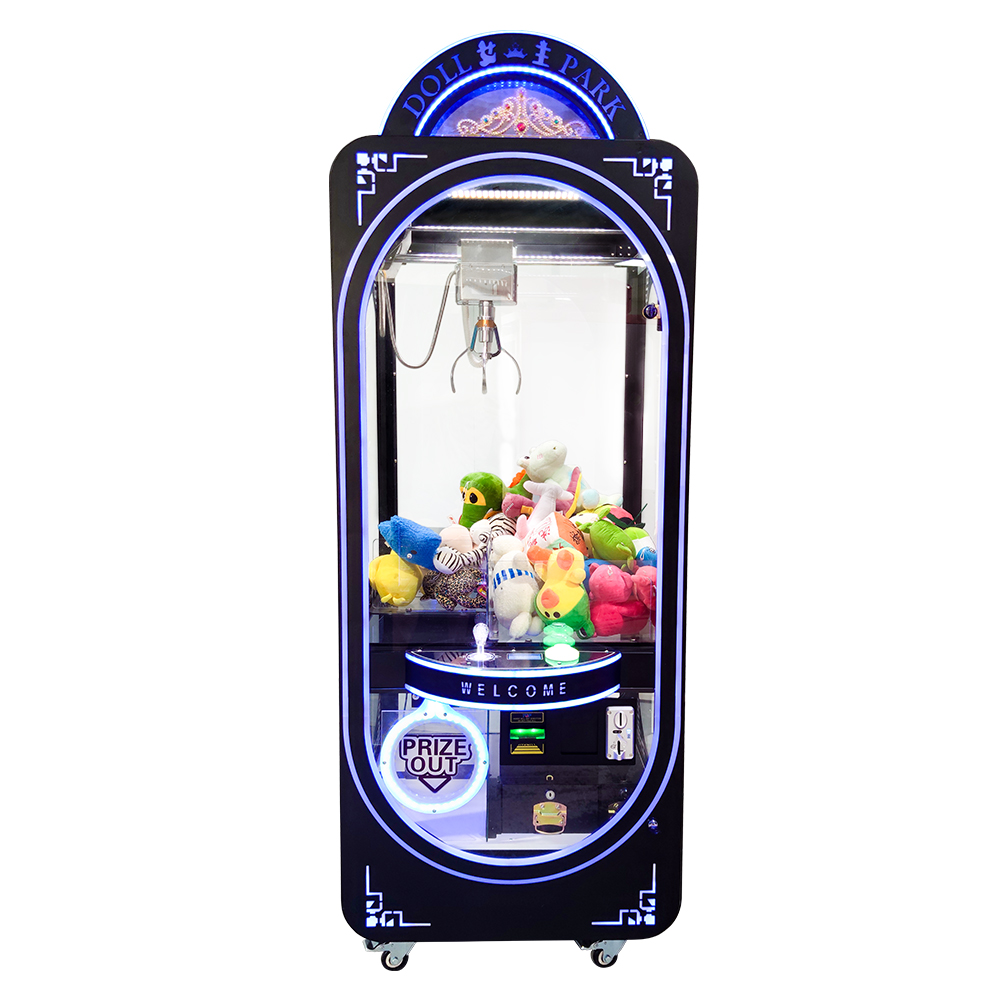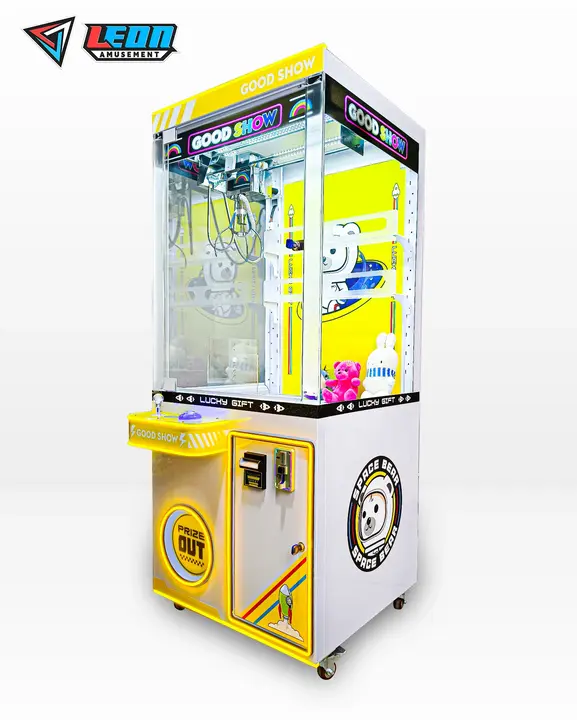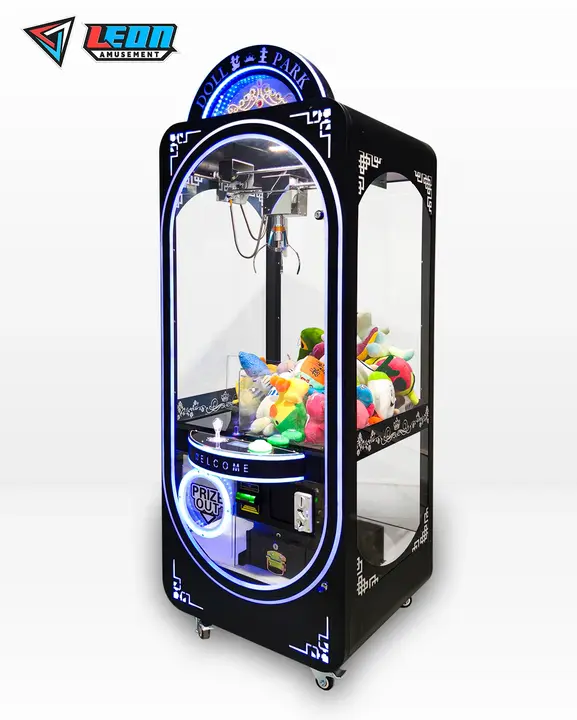Claw machines entice with their strategic prize layouts, varied global designs, intriguing history, unique economic models, and records of astonishing wins.
Table of Contents
ToggleOrigins and History
The history of claw machines is almost as cool as the games themselves, dating back about a century. These machines have evolved from basic mechanical grabbers to the state-of-the-art LED-lit spectacles of today.
Early 20th Century
The claw machine concept first emerged in the United States in the early 1930s. At first, they were used at carnivals and fairs and were called “diggers.” They were fairly rudimentary, consisting of a crane-like device controlled by a small wheel or joystick. It was a novel design among mechanical games, but the first patent for such a device was issued in 1926.
Evolution over the Decades
Claw machines became more and more advanced over time. The introduction of electronic controls in the 1980s was a turning point, and the gaming experience became more engaging because it made the claw’s movements more precise. By the 1990s, claw machines became extremely popular, with more than 40,000 in operation across the United States at the time.
Impact on Pop Culture
Claw machines are not only popular in arcades, but also in pop culture as a whole, as they have appeared on the big screen, the small screen, and even inspired art installations. The nostalgia they evoke and the awe they are held in makes them an absolute staple of entertainment and what we call fun. Polls show that the fictional characters that control the claw machines have even helped to popularize the machines in the surrounding areas, demonstrating their cultural influence more broadly.

Mechanics Behind the Magic
Claw machines are mechanically interesting – a blend of elegant engineering with a hint of psychology. It’s a sophisticated combination of technology and UX design, with every action in any game creating a challenging depth of interest.
Core Components
At the heart of every claw machine is a complex set of motors, cables, and electronics. It utilizes two core motors to control the claw mechanism, one for horizontal descent and the other for vertical descent. A central circuit board controls the speed, strength, and precision of the claw to programmed values, creating challenging but winnable gameplay. However, modern systems include sensors that sense prizes and tighten or loosen the claws based on the size and weight of the prize at hand.
Probability and Payout Rates
Claw machines are set with a certain payout rate, which plays a vital role in ensuring players stay and casinos can make enough profit to stay in business. Typically, the machine is programmed to only allow a win after a certain number of attempts. In most cases, the typical payout offer ranges from one win every 12 or so attempts to one win every 25 attempts – that’s a pretty good deal! This not only helps to keep things running, but also makes players want to keep trying for “one more try”.
User Interaction Dynamics
Claw machines are all about user experience. Settings such as claw strength, precision level and even claw cost can be adjusted to suit the expected skill and engagement level of the target audience. The “light and sound” feedback mechanism is fine-tuned to provide maximum stimulation and rewarding sensations to enrich the gaming experience. Studies have shown that these sensory cues increase the time and money players spend on the machine.
Economics of Claw Machines
The economics and usability of claw machines are perfect examples of their use in the arcade industry, combining high profitability with consumer psychology. These machines are not only entertaining, but they are also complex economic machines designed to generate maximum profits for casinos and user experience for players.
Cost and Profit Analysis
The cost of a claw machine is not just the cost of the machine itself; it also includes the maintenance of the machine, the maintenance of the prizes, the rental of the venue, etc. A standard claw machine costs between $2,000 and $4,000 to purchase, and the wholesale cost of the prizes themselves usually ranges from $0.25 to $2.50, depending on the type or quality of the prize. Playing a game usually costs consumers $1 to $2, and operators aim for a profit margin of 200% to 400%. The idea is to maintain a balance so that the machine is profitable while still providing a good return for the players.
Strategic Prize Placement
The prize distribution within the claw machine is carefully designed, and its placement is designed to increase player engagement and spending. High-value items are often stored in some of the harder-to-reach areas of the home to entice players to try again and again. Operators often like to mix high and low value prizes to keep the game alive. Back on the machine, prize placement can optimize revenue, and strategic prize placement based on machine telemetry analysis can increase revenue by up to 25% compared to random prize placement.
Revenue Management
Revenue management for claw machines requires adjusting game settings based on real-time data to maximize revenue. Change claw strength, payout rate, and prize distribution from within each position to adjust the view based on time of day, player traffic, and historical number of payouts received. Mobile operators who actively manage these parameters have seen an average revenue increase of 18% compared to operators who do not manage these parameters.
Global Variations
While universally popular, claw machines present fascinating differences in design, gameplay, and regulatory compliance across countries. These differences not only cater to local preferences and legal requirements, but also enrich the global landscape of arcade games.
Design and gameplay differences
In Japan, claw machines are called “UFO catchers” and are designed with multiple claw arms that offer a wide variety of collectibles, from anime characters to local snacks. Japanese machines are often more complex, with controls that allow for precise movement and strategy, a big departure from the one-button machines common elsewhere. This complexity adds to the appeal, making them a must-have in Japanese arcades.
In the United States, these machines are simpler but are known for their flashy designs and large plush toys. Gameplay often targets quick returns, fitting into a fast-paced entertainment culture. Surveys show that American players prefer larger, more conspicuous prizes, which can influence the types of items stocked in the machines.
Regulatory influence
Different countries have different regulations for claw machines. In some parts of Australia, for example, these machines are regulated by gambling laws that set payout rates and the age of participants. Regulations may set a minimum payout rate of 30% to ensure a fair chance of winning a prize.
In contrast, European countries may focus more on the safety and quality of prizes, and whether the machine is suitable for children. These regulations ensure that the machines are safe and fair, but also affect the type and frequency of prizes.
Cultural preferences
The choice of prizes and the theme design of the machine often reflect local cultural elements. In South Korea, machines are often filled with K-pop items and traditional Korean accessories, directly catering to the tastes of the local population. Data shows that machines themed around local culture perform 20% better in terms of engagement and revenue compared to standard machines.

Famous Wins and Records
Claw machines are in a world of their own, and they are not just relaxing games, but they can also break records and make news. This not only shows the talent required to play these games, but also adds a unique color to the claw machine craze.
Record-breaking Wins
One of the most impressive records in the history of claw machines was held in Nevada, USA, when a player won an incredible 15 large stuffed animals in a row. The local arcade management recognized the achievement and often cites it in conversations about the most consecutive wins in the shortest time. The fact that winning at a claw machine requires both skill and luck is evident in the records.
Unusual and Valuable Prizes
High-value Prizes: Some claw machines can offer expensive items such as tablets or mobile phones as top prizes. One claw machine located in Tokyo, Japan even includes brand new smartphones as prizes. One player ended up winning a top-of-the-line model worth more than $1,000 from a test machine, a win that served as a reminder that the stakes of playing claw machines are huge.
Celebrity Claw Machine Challenges
Sometimes, celebrities participate in claw machine challenges, and their participation is recorded and shared on social media, causing a sensation. For example, a YouTube star played a claw machine in every state in the country and released the process in a series of viral videos. This not only revealed the popularity of claw machines around the world, but also increased traffic to the arcade in the video.



